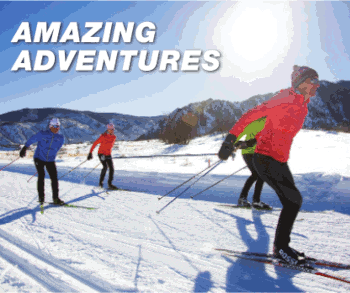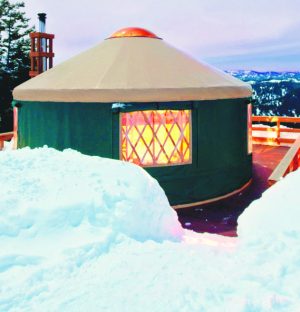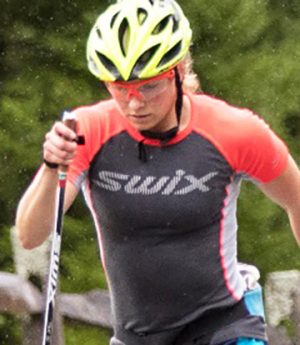![Kikkan Randall makes history becoming the first American woman to win a World Cup race taking the gold in the 1.2 km skate in Rybinsk, Russia on Dec. 16, 2007.[P]Shakey Fecteau](http://skitrax.com/skitrax22/images/skitrax/476d9a50d106dFacteau for Ski Trax 1 1.2.jpg)
Kikkan Randall makes history becoming the first American woman to win a World Cup race taking the gold in the 1.2 km skate in Rybinsk, Russia on Dec. 16, 2007. ©Shakey Fecteau
A second red circle is around Dec. 16 because that was the day she made history again becoming the first American woman to win a World Cup race as she took another 1.2 km skate sprint over the same-but-different (real snow this time) course in Rybinsk.
Prior these storybook results Randall has two two dates circled from the 2002 Olympics are Feb. 15 when she started the pursuit race to give her a race start before the sprint on the 19th. And at the 2006 Torino Olympics other circled dates include Feb. 14 (10th with Wendy Wagner in the team sprint), the 16th – 53rd in the 10 km classic as a final tuneup for the freestyle sprint on the Feb. 22d when Randall produced the first Olympic top-10 result by a U.S. woman.
And now there’s May 16, 2008. She disclosed the date earlier this week in a media teleconference. That’s when she and Canadian sprinter Jeff Ellis will marry. Not so coincidentally, she spoke by phone with U.S. media while in Toronto, spending the holidays with Ellis before she heads to the U.S. championships Jan. 1-6 at Michigan Tech in Houghton, Michigan.
Unfortunately, she said, Ellis – who hopes to make the Canadian sprint team for the Vancouver Olympics in 2010 – injured a shoulder recently. “So, I’m kinda out there by myself” on recreational or training ski sessions.
In other matters, Randall recounted her magical moments on Sunday, Dec. 16 in Rybinsk as she dropped Norway’s Astrid Jacobsen, the 2007 sprint champion, by using a tactic she had seen Jacobsen use in her semifinal round: make a break on the lone climb of the 1.2 km course.
“I got the hill and was skiing side by side with her, waiting for her to make a move,” Randall said. “A charge went through me. ‘I’m gonna go for it.’ I started charging as hard as I could.”
She took the crest of the hill alone and fretted briefly about Jacobsen catching her, drafting on the downhill and then the Alaskan, who turns 25 on New Year’s Eve. But she didn’t have to worry. Jacobsen couldn’t catch her and she crossed the finish line a stride or two ahead of the Norwegian.
“When I hit the finish line,” she said, “I threw my arms up and thought, ‘Oh my gosh. What did I just do?’ Everything worked so well for me.”
When Andy Newell finished third in a sprint in China after the ’06 Olympics – the first U.S. cross-country podium since 1983, it showed his teammates a U.S. skier reaching a World Cup podium was possible. Comparing her victory to Roger Bannister’s landmark sub-4-minute mile (May 6, 1954), Randall said, “Victories are possible.”
Training together with Canadian Olympic sprint champion Chandra Crawford helped boost her sprinting, Randall said. “Her sprint is really quick off the line for about five seconds, then I accelerate to about 20 seconds,” Randall said. “I’m strong on the climbs and strong in my finish.” Mixing and matching strengths, she said, “We fit together.”
On other issues, she said:
– Getting an early start last April with the Alaska Pacific University Nordic Ski Center squad under new Coach Erik Flora jarred her at first. However, as the preseason went along, and mixed with U.S. Ski Team training camps, she could feel herself skiing harder longer. She put in more than 100 days of skiing through by the and of summer and could tell she had more endurance and more speed.
– With an aunt (Betsy Haines, 1980) and uncle (Chris Haines, 1976) who were Olympians, she was infected early with Olympic awareness. “I remember watching my first Olympics in 1988 and thinking – at five – ‘Wow! That’s something I want to do,” she said. She still has her aunt’s 1980 Olympic suit. “The Olympic logo on it made me feel great.”
– One of a dozen or so athletes named before the 2006 Olympics because of high hemoglobin readings and suspended for five days, she never wants to go through such “emotional trauma of being suspected” of using performance-enhancing drugs. “I’m a completely clean athlete and for people to put suspicion on me was tough.” Her remedy: “I take great caution to ensure my hydration is adequate.”
– An apostle of patience, she stressed the need to realize (athletes, parents, the public) it takes 10 years, maybe more, to become an elite athlete in cross-country. At the same time, just piling on hours and hours of training won’t work. “Rest and recovery are so important,” she said. Randall also stressed that her success of the last three seasons won’t be pushing to make a big jump in training. She’ll proceed with small, incremental additions to her training regimen. “I’m not gonna try to get too ambitious” and wind up short-circuiting the steady advances she’s made.
– She’s ready to take whatever (additional) leadership role is necessary to help U.S. women begin to challenge internationally in cross-country racing.
– The growth of sprint racing and mass start races are two key ingredients in helping cross-country skiing (not just racing) grow in the United States. “I believe there’s a huge potential for our sport to grow in North America,” she said.






![National camp action [P]...](https://skitrax.com/wp-content/uploads/2019/08/Duluth-4-2019-08-08-at-10.46.51-AM-300x246.png)
![Matt Liebsch on the CXC Elite Team [P] CXC...](https://skitrax.com/wp-content/uploads/2019/08/Matt-Liebsch-CXC.2-525x700.4-300x267.jpg)
![Dan LaBlanc [P]...](https://skitrax.com/wp-content/uploads/2019/08/Dan-LaBlanc-img_1855.3.jpg)

![[P]Shakey Fecteau](http://skitrax.com/skitrax22/images/skitrax/476d9a448cab8Facteau for Ski Trax 2 1.2.jpg)